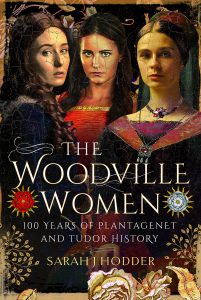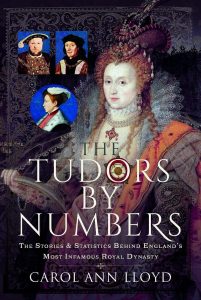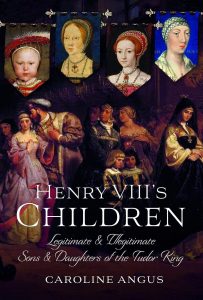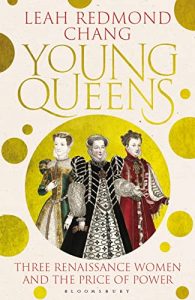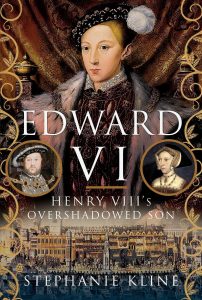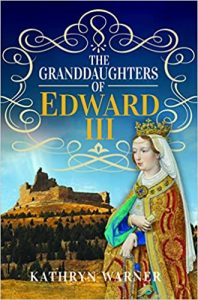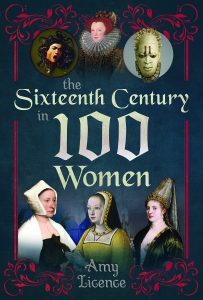‘The Woodville Women’ is a fascinating look at the lives of Queen Elizabeth Woodville, Queen Elizabeth of York, and Elizabeth Grey; mother, daughter, and granddaughter. While the lives of the two Queens are well known, Hodder’s emphasis on family, provides a different viewpoint.
It was particularly interesting to learn about Elizabeth Grey, who was granddaughter to Elizabeth Woodville via her first marriage, also making her cousin to Henry VIII and great aunt to Lady Jane Grey. Elizabeth accompanied Mary Tudor during her brief reign as Queen of France and later married without consent to the ninth Earl of Kildare, who became Lord Deputy of Ireland. Living on the fringes of the royal court, Elizabeth found her kinship with Henry VIII both helped and hindered her as her husband rose and fell from favour.
I have enjoyed the author’s previous books but with ‘The Woodville Women’ I think Sarah has truly found her narrative voice.
Thank you to Pen and Sword for my review copy
Any fan of the Tudors knows that Henry VIII had 6 wives and that Lady Jane Grey was the 9 day queen. But did you know that Henry VII spent 14 years in exile? Or out of 7 coronations, only one was a join coronation? Or that Mary I went on one royal progress while Elizabeth I went on 25? If not, you will after reading ‘Tudors by Numbers’ by Carol Ann Lloyd.
What was particularly interesting for me was the detailed look at what happened during the 13 days in July 1553 when there were 2 Queens of England. By ‘rolling the numbers’ in this educational and amusing book, Lloyd presents the Tudor period through a different lens and would make a wonderful addition to your Tudor bookshelf!
Thank you to NetGalley and Pen and Sword for my review copy.
Caroline Angus’s book is a fascinating look at the lives of the children of Henry VIII. From the longed-for Prince Henry who died at 52 days old to those that survived: Mary, Elizabeth, and Edward. Also included are Henry Fitzroy, Henry’s acknowledged illegitimate son and possible other unacknowledged children.
Through thorough use of household accounts, Angus paints a vivid picture of what everyday life was like for Mary, Elizabeth, Henry and Edward as they grew up and highlights the time the siblings spent together. Both Mary and Elizabeth’s lives changed dramatically when their mothers fell from favour and while Edward did not suffer this, their daily lives were dependent on the whims of the King or his current marital arrangements.
What was particularly interesting was the inclusion of Henry’s illegitimate son by Bessie Blount, Henry Fitzroy. Usually, Henry only gets mentioned in Tudor histories in terms of his birth, whether Henry ever really considered him a potential heir, his presence at Queen Anne Boleyn’s execution and his unexpected death shortly afterwards. Turns out that he was not the most dedicated scholar and when his tutor, Sir Richard Croke, was recalled from Fitzroy’s household and sent to Italy, Angus comments that ‘fighting for the king’s divorce in Italy probably felt like quite a relief in comparison.’
By looking at Henry’s reign through the lives of his children, we get a different perspective to well-known events.
Thank you to NetGalley and Pen and Sword for my review copy.
‘Young Queens’ is a fascinating look at the queenships of three different women and the challenges they faced. Catherine de Medici was Queen Consort of France and then Queen Mother during the 3 reigns of her sons, Mary Queen of Scots was Queen Consort of France and Queen Regnant of Scotland and Elizabeth de Valois became Queen Consort of Spain.
These women also shared personal relationships as mother and mother-in-law, daughter-in-law and sister-in-law and daughter and sister-in-law. Mary had been welcomed into the French royal household at the age of five as the future wife of the Dauphin, where she grew up alongside Catherine’s daughter, Elizabeth.
It was the death of Catherine’s husband. Henri II, at a jousting tournament to celebrate the marriage of Elizabeth to Phillip II of Spain that bound the three women together in tragedy but also changed everything. Catherine became Queen Mother, Mary became Queen Consort of France and Elizabeth soon left for Spain. Mary’s reign as Consort only lasted 17 months and she eventually returned to Scotland as Queen Regnant.
From then onwards their relationship was tested by circumstance and politics. Once separated, the book focuses on their interactions as queens and in doing so, the author brings a new perspective (for me at any rate), to the lives of Catherine and Mary. Catherine faced the rise of religious wars in France while trying to maintain the balance of power in Europe. Mary found her role as Queen Regnant and Scotland very different from her life in France and Elizabeth had to learn to deal with the demands of her mother with those of her new role.
Chang skilfully combines rich detail (including the letters sent between the three women) with a superb narrative, as she gives the three Queens a voice and in doing so brings them vividly to life.
Thank you to NetGalley and Bloomsbury Publishing for my review copy.
‘Edward VI: Henry VIII’s Overshadowed Son’ is an extremely well written account of the life of one of the less well-known Tudor monarchs. The longed-for son of Henry VIII, who became King at 9 years of age, Edward has largely been remembered for dying young and his attempt to change the succession from his half-sister, Princess Mary to Lady Jane Grey.
Stephanie Kline’s book goes a very long way to restoring Edward to the spotlight and taking his rightful place in the history of this famous dynasty. Although with any biography of Edward, the Dukes of Somerset and Northumberland loom large, Edward does not disappear into the background, with Kline showing his role in events and decisions, especially in the last 18 months of his life. By covering the effects of Edward’s religious policies in the reigns of Mary I and Elizabeth I, his legacy is clear to see.
Thank you to NetGalley and Pen and Sword Books for my review copy.
Kathryn Warner’s latest book, is a fascinating look at the 11 granddaughters of King Edward III and Queen Philippa of Hainault. While I knew a little about Edward III and his sons, I did not know very much about his granddaughters. Two granddaughters (Philippa and Catalina of Lancaster) became the much beloved Queens of Portugal and Castile & Leon, others married into the nobility and one became a nun. All had to weather changes of fortune during the turbulent years after the death of Edward III, when first Richard II and then Henry IV took the throne. Thanks to this very readable and skilfully woven together account, these 11 women can take their places in the spotlight
Thank you to NetGalley and Pen and Sword Books for my review copy.
This wonderful book is like a 100-piece jigsaw puzzle, with each chapter building towards a picture of life for women in the sixteenth century.
The 100 women featured include Queens, Queen Consorts, noblewomen, ordinary women and nameless women who were captured in paintings and written records. They come from the United Kingdom, Europe and beyond. Through thorough research, the Amy Licence has included women who usually only feature on the fringes of court life.
In particular I was interested to learn more about the following women, amongst others. Honor Grenville, Lady Lisle, who tried to get her daughters accepted as ladies in waiting at the English court, Maria de Salinas who had accompanied Catherine of Aragon to England from Spain and Anne Seymour, Duchess of Somerset, who was imprisoned in the Tower after the downfall of her husband.
As the book moves from woman to woman and forward through the century, the links between some of these women become clear. What makes this book particularly fascinating is that as well as general information about each woman, Amy Licence offers a snapshot of their lives by focusing on a particular event.
We see Lady Jane Grey on the day she took possession of the Tower of London as Queen of England, Catherine of Aragon marry Prince Arthur at St Paul’s Cathedral, a group of women on a street in London, Margaret Tudor waiting for her husband to return from the Battle of Flodden and Mildred Cooke preparing for her wedding to William Cecil.
This is a must read to learn more about women in the sixteenth century.
Thank you to NetGalley and Pen and Sword Books for my review copy.

